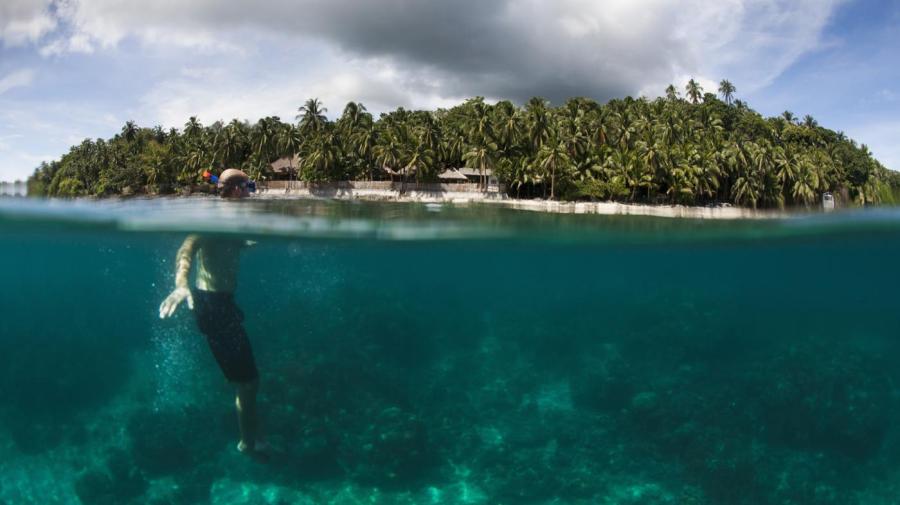What Are Insular Shelves?

Insular shelves are underwater landmasses surrounding islands. They are relatively shallow areas that extend from the low waterline, usually to a depth of about 100 fathoms, where they end at the shelf break, a point of much steeper slope.
Erosion of the island tends to cover insular shelves in sediment, which is coarser near the shore and finer farther from the coast. Because the water is shallow and receives abundant sunlight on insular shelves, they are usually much more full of life than the deeper waters beyond. This sea life includes microscopic plants and animals, schools of fish and larger animals that feed on the fish. Some islands, particularly some types of volcanic islands, have no insular shelves, but rather drop off from land to deeper ocean.
An example of the various zones of an insular shelf with a coral reef occurs off the Republic of Palau, whose shallow waters host a complex ecosystem. Near shore is an intertidal area with mangroves, sand, sea grass and volcanic rock. Next is a vertical section of algae and coral, which gives way to a lagoon area protected from active waves. After the lagoon, the back reef, reef flat, reef crest and fore-reef host coral, algae, sea-grass and sea life. These give way to the escarpment at the shelf’s edge.





